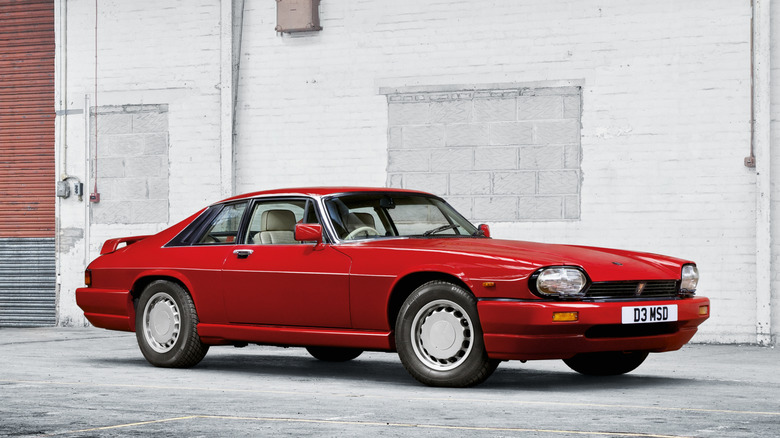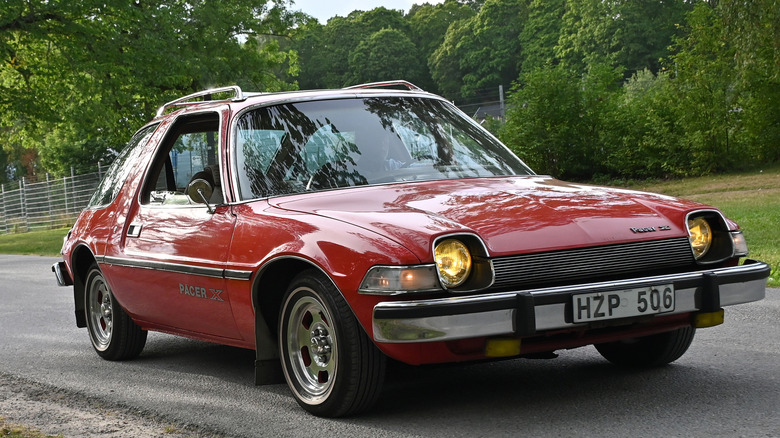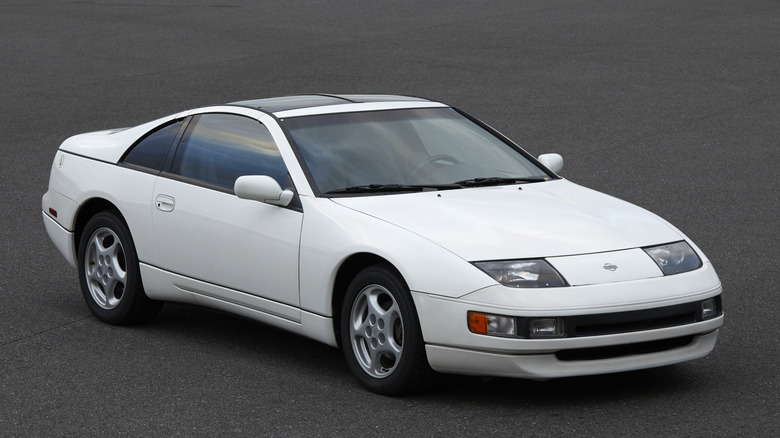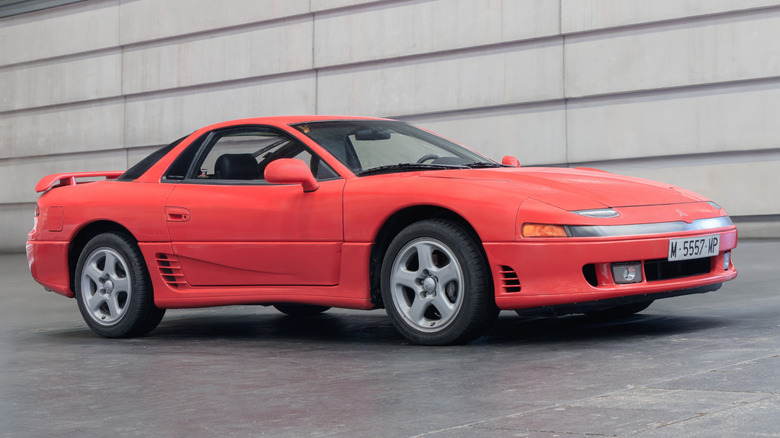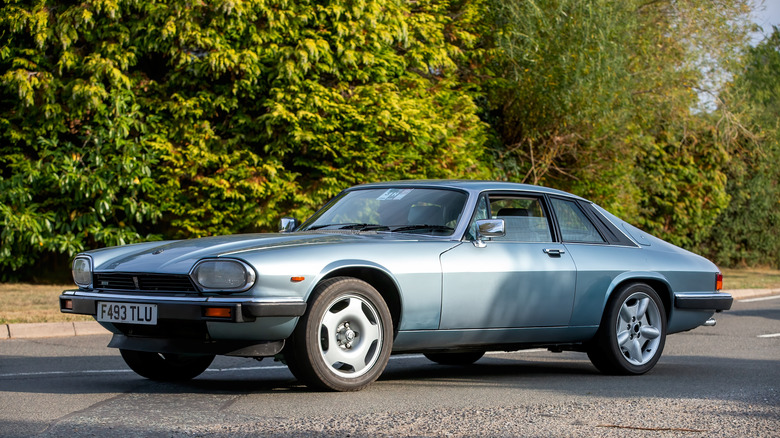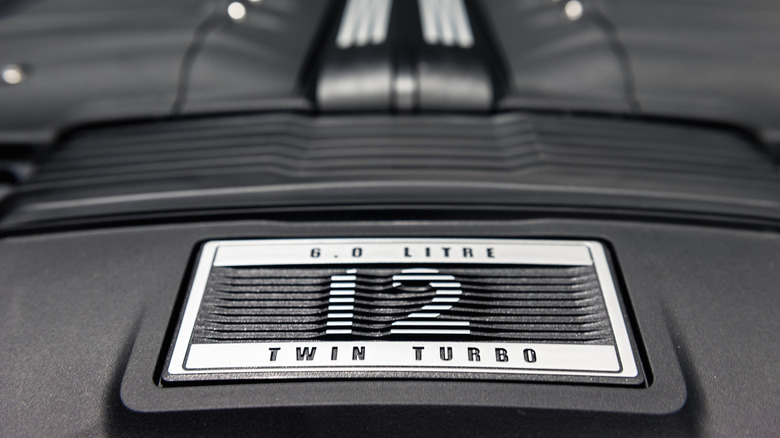5 Of The Most Difficult Cars To Work On Or Repair (According To Owners)
One of the simultaneously most lauded and dreaded tasks of any gearhead is working on a car yourself. Whether it be something as simple as an oil change or as complex as a drivetrain swap, doing all your own maintenance can either be a beginner-friendly chore or a daunting, multi-day project. Often times, this comes down to a few key elements, namely: how much room do you have to work with, how advanced is the car, and does the car have any funky or oddball quirks that are particularly headache-inducing when the hood has to come up?
There's almost never going to be a comprehensive list of the most difficult cars to work on, because as we all know, there's always that one bolt that you can never get at, or the one filter that requires you to have no fewer than three elbows to extract. Many cars have these issues, especially when it comes to clearances; this applies to even cars typically venerated for their ease of maintenance. Take the classic Volkswagen Beetle, for example — while it's normally fine, there are some models with weird idiosyncrasies.
This list will address cars that owners often cite as particularly challenging to work on from a technical or ergonomic perspective; basically, cars that are equipped with finicky, advanced features and are a pain to actually get at the part needing servicing; or cars that are so daunting that they're genuinely perplexing to the amateur wrencher. We'll keep it narrowed to production cars only, so no hypercars or weird prototypes because they're all like that, generally-speaking. That said, let's hit the road — or garages — and check out which cars frustrate their owners the most.
AMC Pacer
Fun fact: the Pacer was designed to utilize a Wankel rotary engine –that's right, the same configuration as the engine made famous by many Mazda sports cars (as well as other manufacturers). The reason why the AMC Pacer didn't use the Wankel is long and complex, but for simplicity's sake, it's boiled down to the engines simply not being efficient enough for a post-Oil Crisis world. AMC actually has a history dating to 1964 with the long-forgotten Rambler Rotary, an engine with a different configuration to a Wankel, but for the Pacer, the company opted to source from Curtiss-Wright and General Motors. The deal fell through when the GM rotary project was cancelled, leaving the Pacer a complete car with no engine.
Fast-forward to 1975 when it debuted, and instead of a rotary, you'll find the AMC straight-six engine under the hood instead. At a glance, this doesn't seem like a huge deal; it's a good engine, albeit slow and inefficient, powering cars like the Jeep CJ and AMC Gremlin. But the Pacer was designed for a rotary. What this means for the customer is that you better get used to having the windshield overhang get in the way.
For instance, the final two spark plugs both sit directly under the windshield, making it a potential nightmare to work on, with many just running old spark plugs to avoid the headache. Owners even complained about the spark plug wires being cooked beneath that cowling. It's ironic because the engine these cars use boast an incredible legacy of reliability. Owners of AMC straight sixes today often cite the powerplant as being one of the highlights, with the venerable 4.0L Jeep engine being a direct derivative of the AMC 4.2.
Nissan 300ZX (Z32)
The third generation of the famous Nissan Z-car, the 300ZX, took its name from the 3.0L V6 housed under the hood, an engine which coincidentally boasted 300 horsepower in USDM trim. That's an awful lot of bang for your buck for an early-'90s Japanese sports car, thanks to the twin-turbo VG30DETT. It's an excellent engine on a technologically-advanced platform, one which features Super HICAS four-wheel steering, multi-link front and rear suspension, and a host of electronic equipment. Therein lies the problem, however — this is a svelte, compact Japanese sports car with a large twin-turbo engine and a ton of technology to boot. Space is at a premium here.
Maintaining a Z32 300ZX presents a myriad of challenges, not the least of which is because of how cramped everything is. Owners cite the confines as one of the principal reasons behind its difficulty, with the timing belt being particularly challenging compared to other vehicles. HICAS and Super HICAS also presents its own unique challenges, as it's not exactly a commonly-found system in general and requires some mechanical intuition to fully understand. Many owners often delete HICAS altogether for a variety of reasons, one of which being that if something serious happens, it's often cheaper just to get rid of it.
That isn't to say that the Z32 is a bad car, much like the Pacer. It simply houses a number of oddities that might not be familiar to some, and demands patience and small hands to perform some tasks. Many of these issues may be avoided if the car is naturally-aspirated; Super HICAS was only offered on 300ZX Turbo models.
Mitsubishi 3000GT/GTO VR4
If you thought the 300ZX was bad, wait until you take a similar turbocharged 3.0 V6 engine and pair it with AWD. At first glance, the 3000GT doesn't look much different to its Nissan rival; however, it is both far more technically complex and tricky to work on because of the placement of everything. Unlike the 300ZX, the 3000GT features the VR4 all-wheel drive system — plus four wheel steering along with that. Cramming all of that, along with the vacuum lines inherent to cars of this vintage, means that you need an almighty level of patience or dexterity to work within the confines of its engine bay, so says owners who describe it as legendarily difficult to work on.
Another problem is how well these vehicles were treated — that is to say, not great. Any car, no matter what it is, will generally run and drive just fine, provided two factors are met: it's not inherently bad from the factory like Fords with wet timing belts, and owners do the maintenance. The 3000GT garnered somewhat of a poor reputation for reliability over the years, but as long as the service intervals are adhered to, it's generally no more or less reliable than any other classic car and can be daily-driven as such.
But therein raises the question of how difficult it is to do such a service yourself. It's a long list, featuring some daunting tasks like changing the timing belt, itself a solid day or multi-day long affair requiring several major components to come off. However, it's still a JDM car ahead of its time, and that makes it inherently cool.
Jaguar XJS V12
Obviously something from British Leyland had to make this list, but we're excluding things such as the infamously poor quality-control for the sake of fairness here. That still leaves us with what is, ostensibly, a luxury car built in the 1980s in England. That is to say, owners cite it as a car which, when it's not drinking fuel, it's actively rusting. Moreover, parts and specialists who are willing to work on these cars are both at a premium, so you'll likely have to be spending more time than you anticipate with a wrench in your hand unless you have exceptionally deep pockets. Those problems only compound with the V12 powertrain, which only adds complexity – though it is incredibly interesting and special in its own right.
Similar to any car of this vintage, it's more than likely to have a few electrical gremlins, fluids will spontaneously disappear, and parts will fail; that's common to any classic car, generally speaking. Moreover, common to many 1980s cars, the XJS uses a myriad of vacuum lines to operate various vital components — lines which can leak. Moreover, owners have reported similar issues when it comes to space. Just one glance under the hood reveals how cramped and labyrinthian everything looks to an amateur wrencher.
The status of the XJS's reliability, much like other British Leyland cars, is up for debate. Owners flip-flop between it being the worst car in the world and actually not too bad, which again illustrates the importance of doing the maintenance yourself. Just be prepared to look under the hood and see Lucifer's jigsaw puzzle beneath it.
Volkswagen W12-equipped cars (Touareg, Phaeton, Audi A8, etc.)
This harkens back to the 3000GT and 300ZX, both of which had cramped engine bays stuffed with features and big V6 engines. What would happen if you were to quite literally double the engine size? You'd get this monstrosity: the Volkswagen W12. It's undeniably a cool, though often misunderstood, configuration. In simple terms, a Volkswagen 6.0L W12 is two VR6s mounted to a common crankshaft. It has the same profile as a V-configuration engine, just with two independent cylinder banks on either side, for a total of four banks with two heads.
Multiple vehicles use this engine, and absolutely none of them are easy to work on as an amateur wrencher. Typically, you'll see owners complaining about sky-high maintenance costs, not to mention its relative rarity in comparison to other models, and the 12-cylinder layout is inherently more complex than the V10 or V6, for instance. This means a myriad of parts, some of which may be bespoke for W12s, not to mention that some, like the ones found on Bentleys, are twin-turbocharged.
This means that, in addition to all the other issues inherent to these luxury cars (of which there are many), now you have a hideously-cramped engine bay packed with layer after layer of technology. This is a daunting task for anyone who's relatively unfamiliar with how involved this work can be. Generally, if maintenance costs require you to hand money by the bag to your mechanic, there's a reason for that. While these cars are undeniably cool, they're also unbelievably complicated, though not as complicated as a Mercedes-Benz 600 "Grosser," the ubiquitous dictator's car.
Our methodology
This list only addresses cars which have a distinct presence on today's roads, to a reasonable degree, with the W12 likely being the rarest find. As such, it excludes prototypes, hand-built vehicles, and exotic cars.
All information was found through various sources, such as dozens of forums, video demonstrations, and the author's own history as a mechanic. Some of these sites include more general, open forums, as well as specialized forums dedicated to the specific makes and models. Likewise, for facts and figures relating to the cars, this article draws directly from first-hand sources such as original documentation, brochures, and manuals.
